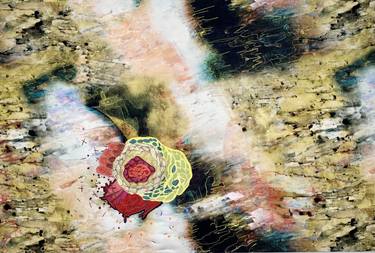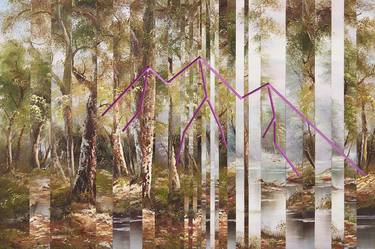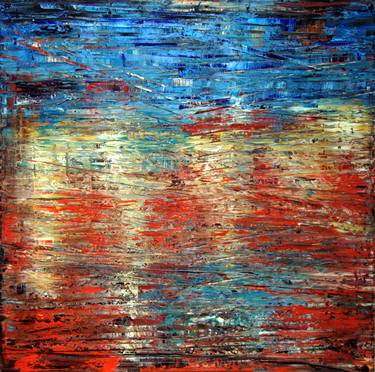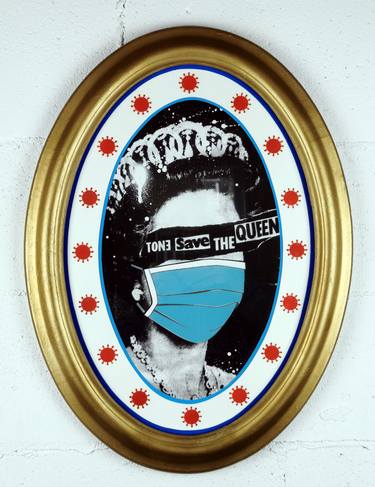Wood Paintings For Sale
Browse art and see similar matches
Try Visual Search
Category
Filter (1)
Filter
Category
Style
Subject
Medium
Material
Price
Size
Orientation
Color
Artist Country
Featured Artist
Paintings, 116 W x 66 H x 2 D in
United States
$12,750
Paintings, 12 W x 12 H x 0.8 D in
United States
$1,300
Paintings, 57.1 W x 57.1 H x 0.8 D in
Spain
$10,491
Prints from $60
Paintings, 48 W x 40 H x 1.5 D in
United States
$4,900
Prints from $40
Paintings, 15.7 W x 11.8 H x 1.2 D in
United Kingdom
$990
Prints from $190
Paintings, 23.6 W x 31.5 H x 4.7 D in
France
$1,490
Prints from $40
Paintings, 30 W x 30 H x 1 D in
Nigeria
$1,210
Prints from $46
Paintings, 36 W x 48 H x 1.5 D in
United States
$4,350
Paintings, 24 W x 24 H x 2 D in
United States
$2,570
Paintings, 60 W x 36 H x 1.5 D in
United States
$10,600
Paintings, 78.7 W x 39.4 H x 1 D in
Canada
$10,200
Paintings, 24 W x 24 H x 0.3 D in
United States
$680
Paintings, 112 W x 72 H x 2 D in
United States
$8,500
Paintings, 49.2 W x 29.5 H x 1.2 D in
Germany
$1,270
Prints from $47
Ombre Stripes of Dots Original 3D collage Painting.
Paintings, 31.5 W x 31.5 H x 0.4 D in
United Kingdom
$2,440
Paintings, 24 W x 24 H x 0.3 D in
United States
$680
Paintings, 63 W x 63 H x 3.1 D in
Portugal
$5,550
Paintings, 79.1 W x 24 H x 1.4 D in
Canada
$5,950
Paintings, 11.8 W x 11.8 H x 0.2 D in
United Kingdom
$200
Prints from $40
Paintings, 10 W x 10 H x 0.3 D in
United States
$215
Paintings, 40 W x 69 H x 1.3 D in
United States
$9,600
Paintings, 24 W x 24 H x 0.3 D in
United States
$780
Paintings, 36 W x 24 H x 1.5 D in
Canada
$2,110
Paintings, 35.4 W x 23.6 H x 1.2 D in
United Kingdom
$2,740
Prints from $80
Paintings, 10.2 W x 19 H x 0.8 D in
Denmark
$2,000
Paintings, 96 W x 48 H x 1.5 D in
United States
$12,750
Paintings, 74.8 W x 56.3 H x 2.8 D in
Italy
$2,550
Paintings, 36 W x 36 H x 1 D in
Nigeria
$1,460
Prints from $125
Paintings, 47.2 W x 59.4 H x 3.9 D in
Mexico
$4,450
Prints from $40
Paintings, 30.7 W x 46.5 H x 0.8 D in
$1,510
Study for 100 years, with embroidery
Paintings, 27.6 W x 19.7 H x 1.6 D in
Netherlands
$2,150
Paintings, 48 W x 24 H x 2 D in
United States
$2,910
Paintings, 24 W x 36 H x 2 D in
United States
$3,310
Paintings, 24 W x 36 H x 1 D in
$4,010
Paintings, 71.3 W x 74.8 H x 2 D in
Italy
$7,550
Paintings, 16.7 W x 22.6 H x 1 D in
Canada
$1,430
Paintings, 24 W x 36 H x 0.3 D in
United States
$1,000
Paintings, 24 W x 28.7 H x 1.2 D in
Australia
$1,510
Paintings, 46 W x 35.6 H x 1 D in
South Korea
$2,970
Paintings, 16 W x 20 H x 1.8 D in
United States
$730
Paintings, 48 W x 60 H x 1 D in
Nigeria
$4,000
Prints from $40
Paintings, 48 W x 77 H x 3 D in
United States
$11,750
Paintings, 59.1 W x 39.4 H x 2 D in
Germany
$5,050

















































